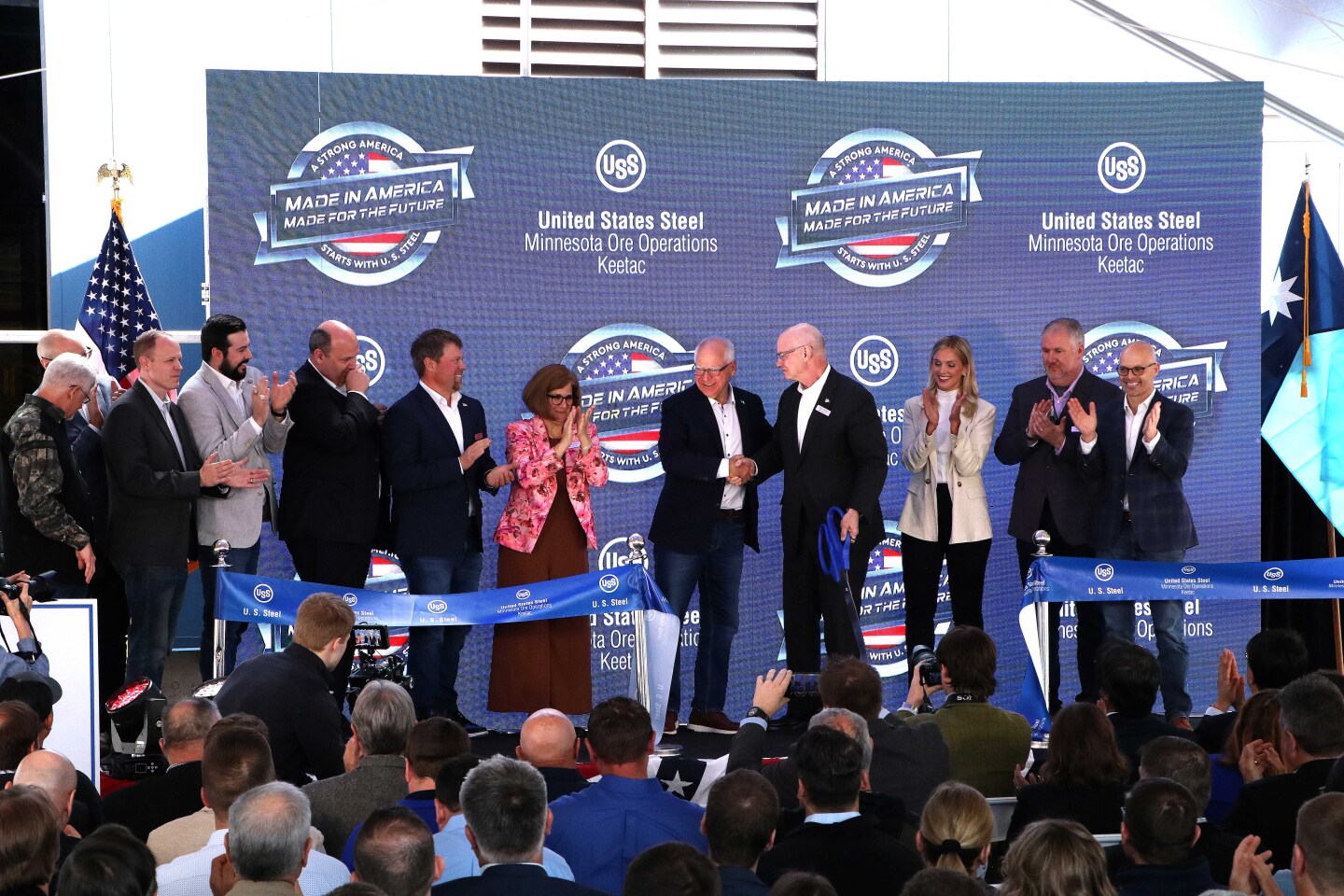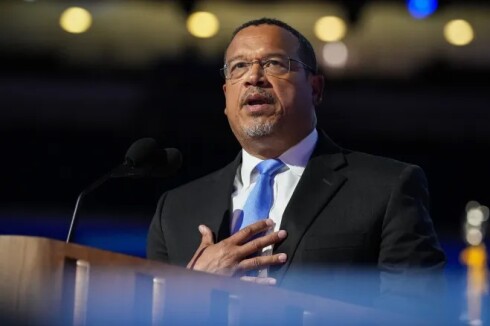KEEWATIN — Of the six operating taconite mines and pellet plants on the Iron Range, U.S. Steel’s Keetac facility is often the first to idle and the last to reopen when the economy slumps or steel prices fall.
But workers and community leaders hope Keetac’s recently completed $150 million direct reduced-grade pellet plant could change that.
ADVERTISEMENT
“It should give us extra options when markets kind of dip … I think it will be good,” said Jake Friend, a Keetac electrician and president of United Steelworker Local 2660.
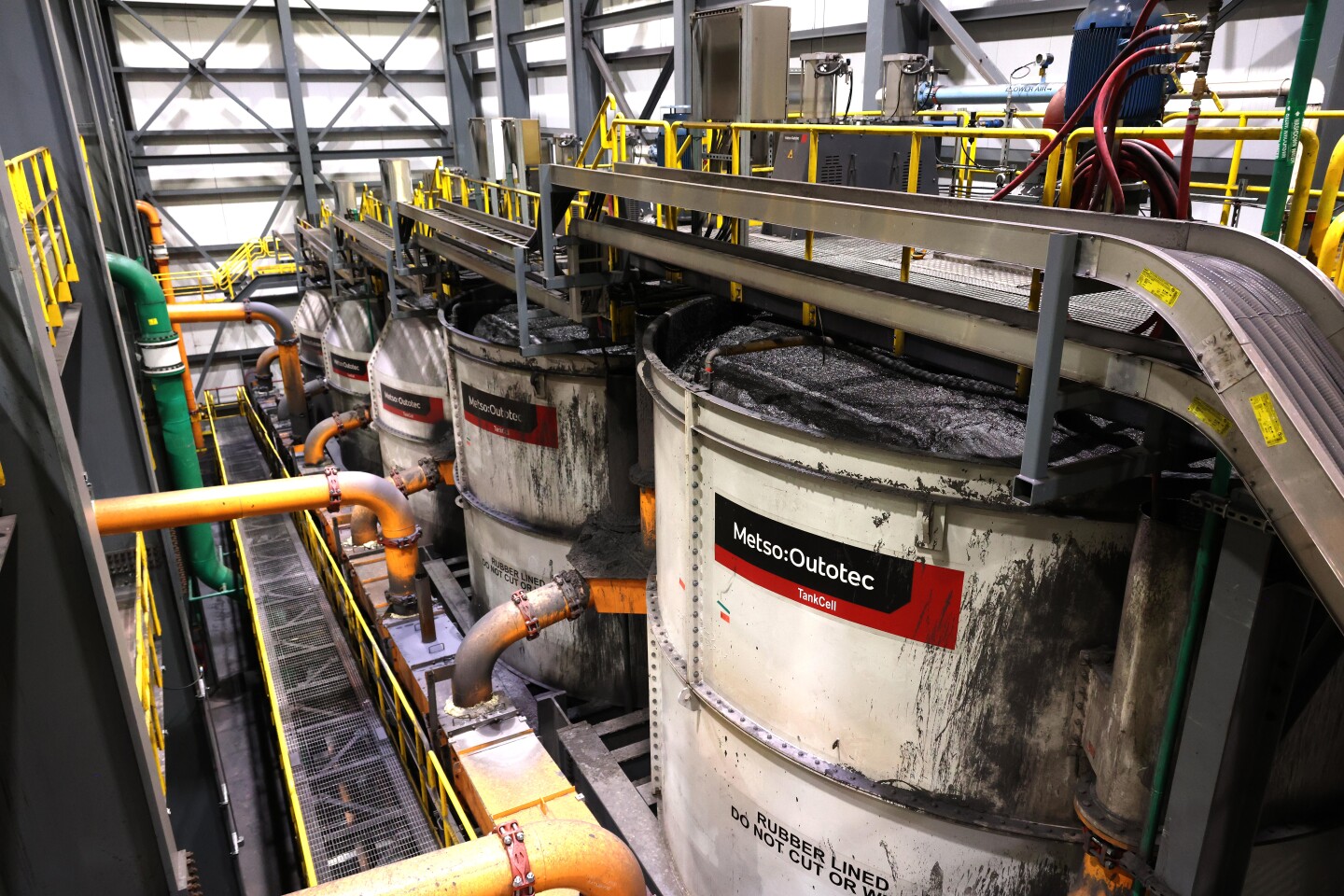
DR-grade pellets serve as feedstock when making direct-reduced iron or hot-briquetted iron, which in turn supply electric arc furnaces making steel.
Electric arc furnaces now make more than 70% of steel in the U.S.
Until the first shipment of DR-grade pellets left Keetac on May 7, U.S. Steel’s two Minnesota ore operations, Keetac and Minntac in Mountain Iron, only provided pellets to traditional blast furnaces.
More markets could help boost demand for Keetac pellets and keep the facility's approximately 500 employees working consistently and further into the future. According to the company, the DR-grade pellet plant created 33 new jobs.
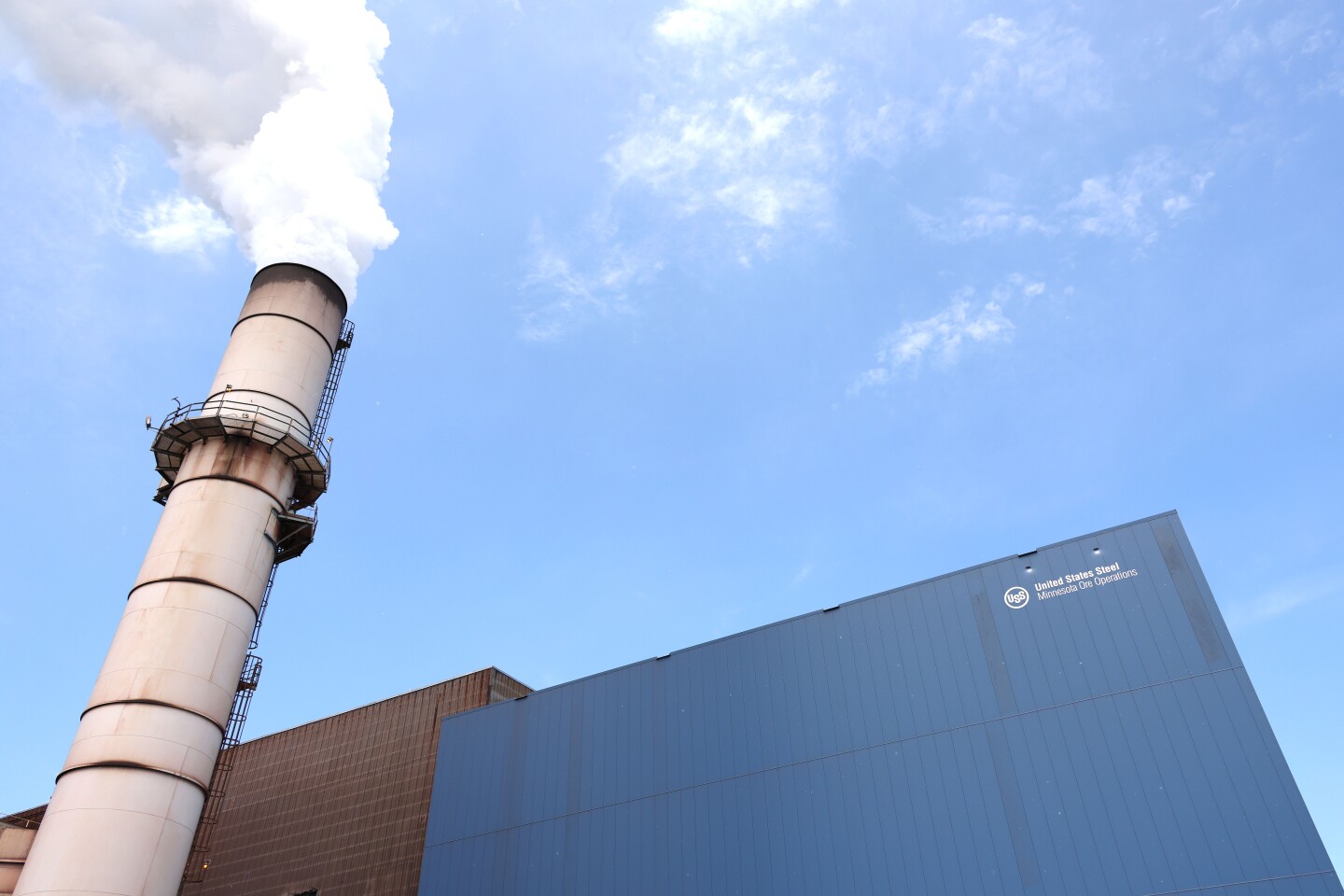
“It gives our little Keewatin a future to look forward to,” Keewatin Mayor Michael LaBine told the crowd gathered in a tent at Keetac on Thursday to celebrate the plant’s opening.
The DR-grade pellet plant was built to the side of the existing pellet plant, allowing it to intercept iron particles that have already been crushed and concentrated with existing equipment. The new facility then crushes the particles into an even finer powder and removes more waste material with magnets and chemical flotation separation. That leads to an iron concentrate with more iron and less silica.
ADVERTISEMENT
The iron concentrate then returns to the existing facility, where it is dried, shaped and baked into marble-sized pellets, taken by rail to the Allouez Ore Dock in Superior and shipped to third-party steel producers.
Minnesota Gov. Tim Walz told the crowd it's "the golden age of infrastructure investment." He noted that the raw material needed for steel to build a replacement for the Blatnik Bridge linking Duluth and Superior and other projects will come from the Iron Range.
He said having the vision to see future needs means investments and expansions today and that the new DR-grade plant helps secure Iron Range jobs.
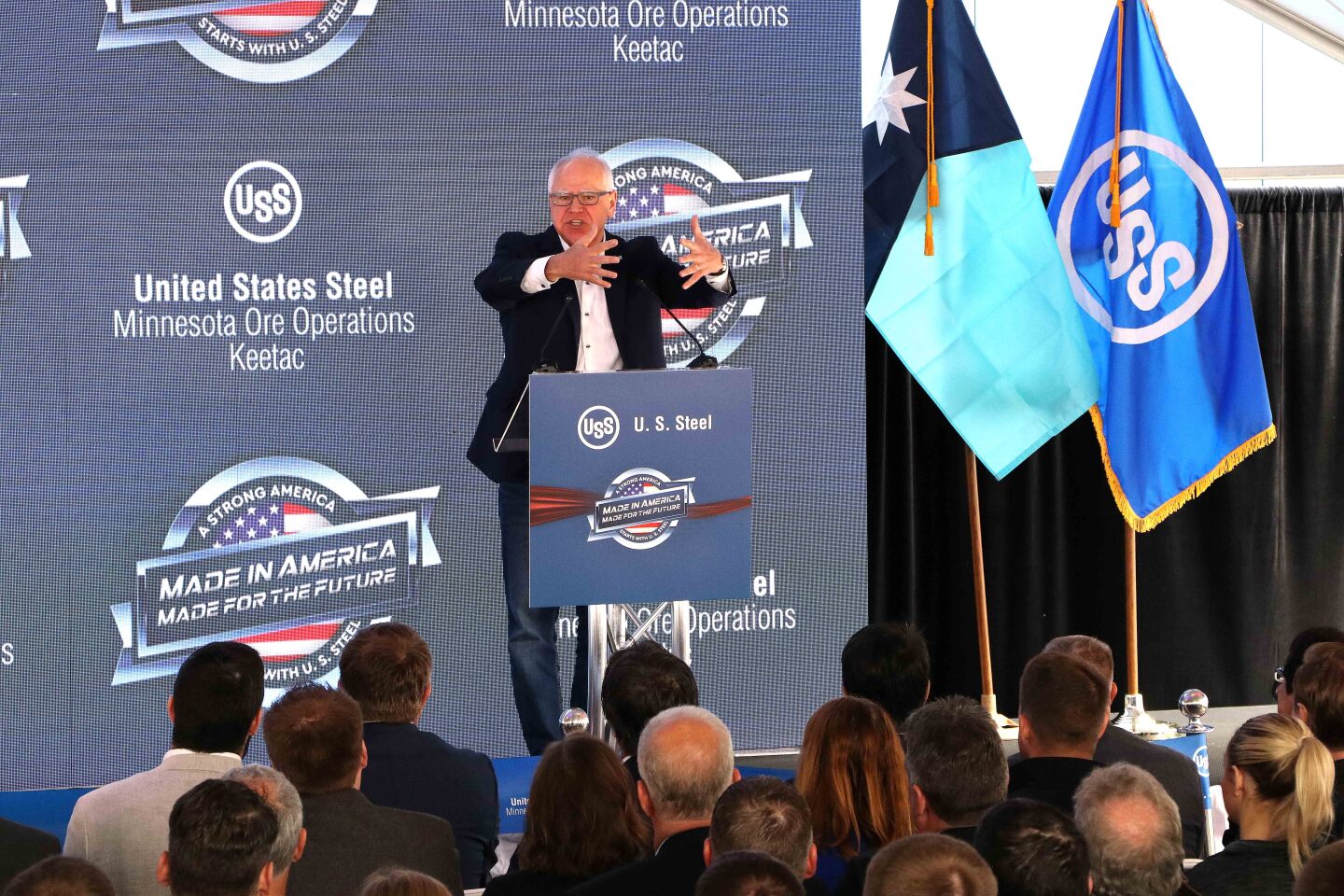
“These are good-paying union jobs. These are jobs that built the middle class. These are the jobs that allow people in this room to live in communities they choose to live in,” Walz said.
Thursday’s celebration comes as Japan’s Nippon Steel tries to buy U.S. Steel for $14.9 billion. But the deal faces opposition from the United Steelworkers, President Joe Biden and former President Donald Trump. The U.S. Department of Justice launched an anti-trust investigation into the deal last month.
Representatives from Nippon Steel were at Thursday’s event.
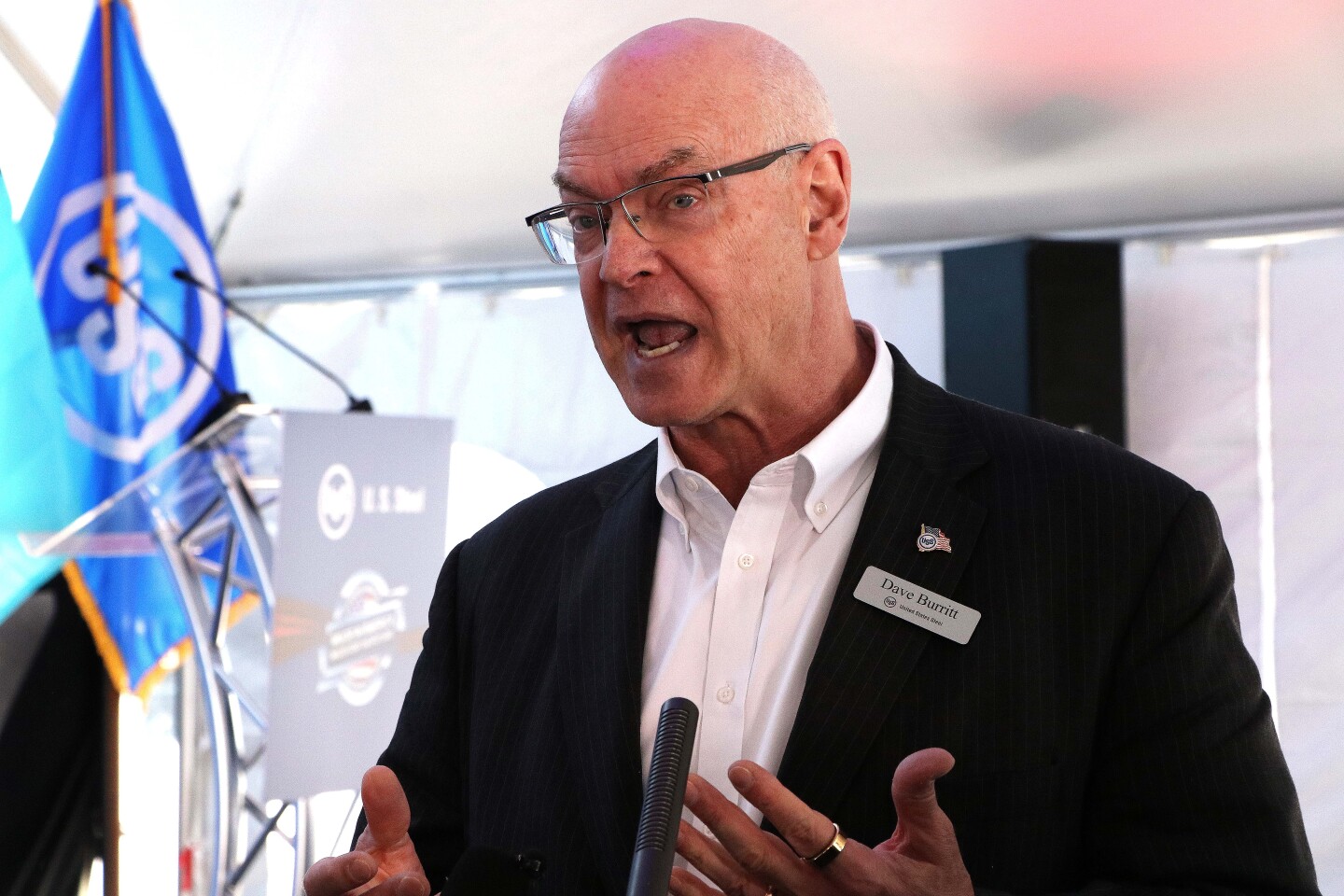
U.S. Steel President and CEO Dave Burritt said Nippon had “deeper pockets” and could provide “security that would be better than before” for the company.
ADVERTISEMENT
And Keetac and Minntac would be part of the company’s future.
“This facility is critical to the success of not just U.S. Steel, but also Nippon … This is clearly a competitive advantage,” Burritt told reporters. “This is the best mine site — Minntac and Keetac — in all of Minnesota. Nobody’s close to us here and that’s good news, and they (Nippon) know that.”
Earlier this week, U.S. Steel sparred with rival iron ore miner and steelmaker Cleveland-Cliffs through news releases.
U.S. Steel began looking for potential buyers last August after what Burritt called a “hostile takeover” attempt by Cliffs. U.S. Steel rejected Cliffs’ $7.3 billion, or $35 per share, offer that month.
It then rejected Cliffs’ sweetened offer of $54 per share in December over antitrust concerns, picking Nippon’s $55-per-share offer instead.
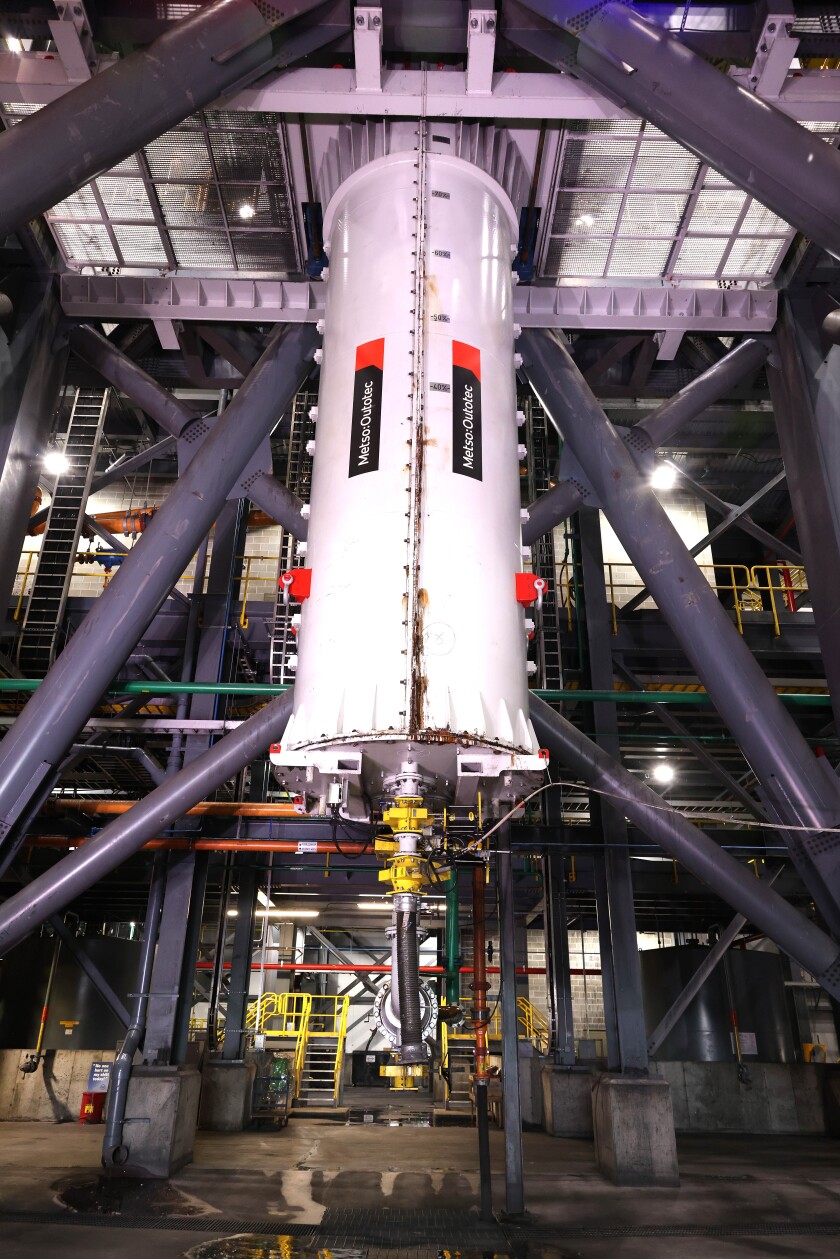
Cliffs has criticized the U.S. Steel-Nippon deal ever since. That prompted the U.S. Steel board of directors to issue a statement Monday.
“The investment by (Nippon) has been under attack since day one by one of our competitors and unsuccessful bidder — Cleveland-Cliffs — who have been sowing misinformation to our stakeholders in a relentless and unbridled effort to derail the transaction,” the board wrote.
ADVERTISEMENT
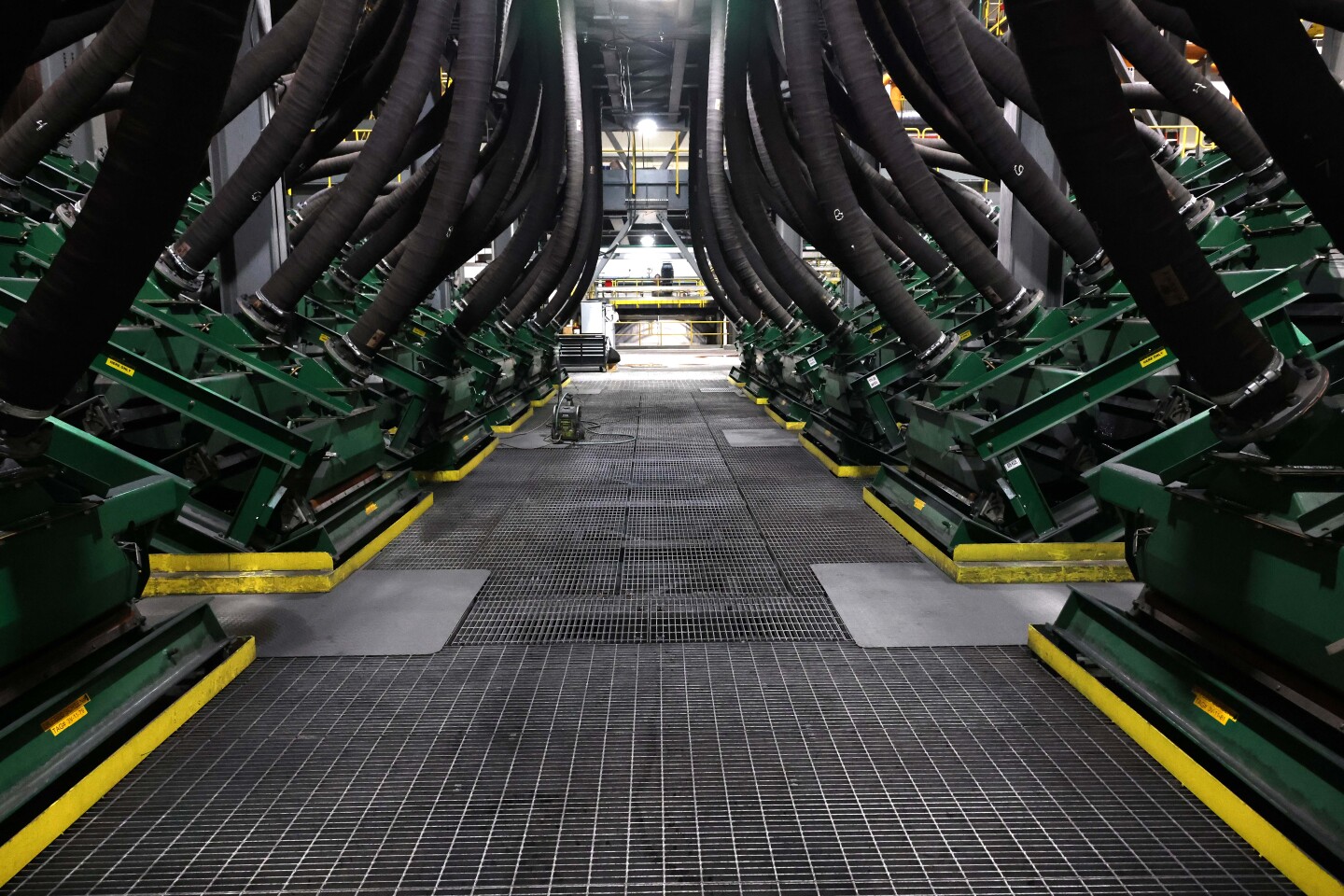
Cliffs shot back in a statement a few hours later, noting the United Steelworkers are staunchly opposed to the U.S. Steel-Nippon deal and have said it has a contractual provision allowing it to veto the deal.
“With a USW-represented facility, you are not entitled to sell to whomever you please,” said Lourenco Goncalves, president and CEO of Cliffs. “We knew this, and you apparently did not. We tried to explain to you, but you did not listen to us. The board of directors of U.S. Steel failed its stockholders in this ‘strategic review process,’ and is attempting to blame Cliffs for its own self-inflicted disaster.
"My opinion remains the same: You cannot and will not close your announced deal with Nippon Steel.”
